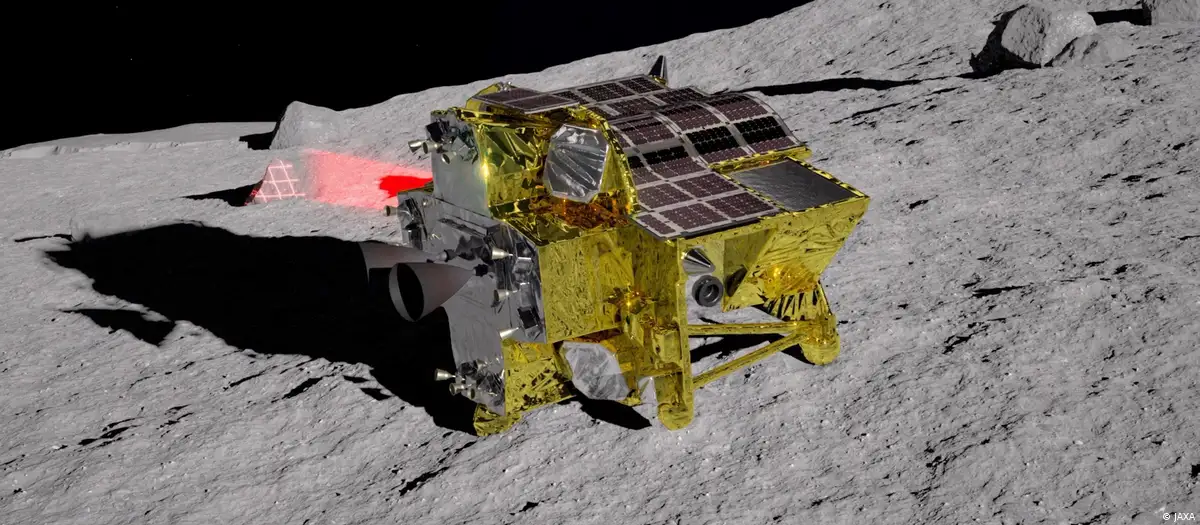SCIENCEJAPAN
Japan’s precision moon probe ‘appears to have landed’
2 hours ago2 hours ago
Japan’s space agency says its “moon sniper” precision lander appears to have touched down successfully. If confirmed, it would make Japan the fifth country to achieve a soft landing on the lunar surface.
https://p.dw.com/p/4bTQ8
SLIM / MBC observation
JAXA says this landing technology will become a powerful tool in future exploration of hilly moon polesImage: JAXA
The Japan Aerospace Exploration Agency (JAXA) on Friday said its Smart Lander for Investigating the Moon (SLIM) appeared to have landed on the lunar surface.
SLIM, also known as the “moon sniper,” was attempting an unprecedented “pinpoint” landing — within 100 metres (about 330 feet) of its target compared with a conventional accuracy of several kilometers.
What we know so far
“From the screen it appears the SLIM has landed on the moon. We are checking the status,” JAXA official Shin Toriumi said during a live broadcast. The agency has said it could take up to a month to verify if SLIM had met its precision goals.
The SLIM, equipped with a pad that cushions impact, was set to land near the Shioli crater, close to an area covered in volcanic rock. The probe was launched in early September.
The 20-minute descent began at 1500 GMT/UTC on Friday. The powered descent from its 15-kilometer (about 9.3-mile) included a short phase of ascent before dropping close to the moon. It was followed by a fully vertical descent from 7 kilometers. During the descent, the craft scanned the potential landing site for rocks and boulders that might have jeopardized a smooth touchdown.
What’s so special about the landing?
JAXA said the craft’s landing technology could allow moon missions to land “where we want to, rather than where it is easy to land.” SLIM could be a powerful tool for the future exploration of the hilly poles of the moon. Those areas are potential source of resources necessary to sustain life — water, oxygen, and possible fuel.
Achieving any soft landing, however precise, would make Japan the fifth country to do so, after the United States, the Soviet Union, China, and India.
Several lunar landing attempts by Japan have failed, including last year when it sent a probe called Omotenashi as part of the US Artemis program.
Omotenashi would have been the world’s smallest moon lander, but it lost contact.
In April, a Japanese start-up called ispace failed in an ambitious attempt to become the first private company to land on the moon.
India’s historic touchdown came in August when its Chandrayaan-3 probe landed on the moon’s south pole. The country has announced plans to set up a space station by 2040.
rc/lo (Reuters, AP)






























